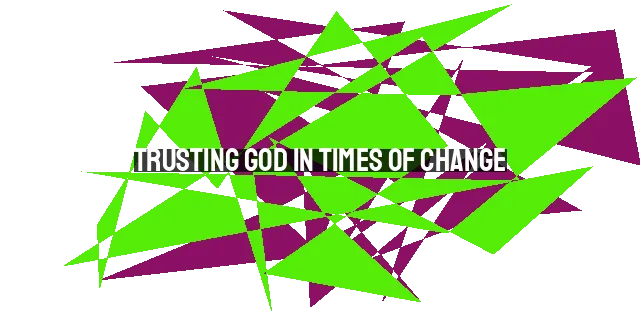Christian Hub
1 year ago
The Tragic Sacrifice of John Chau: A Martyr for the Gospel
The Story of John Chau: A Martyr for the Gospel
In November 2018, a young missionary named John Chau set out on a perilous journey to bring the message of Jesus Christ to the secluded Sentinelese people on North Sentinel Island. His mission was met with tragedy as he was killed by the very people he sought to save. This story raises many questions about the nature of God's work, the role of missionaries, and the power of forgiveness. In this article, we will explore these questions and reflect on the ultimate sacrifice made by John Chau.
The Call to the Sentinelese
John Chau was a man driven by a deep faith and a passionate desire to bring the gospel to those who had never heard it. He spent years preparing for his mission, learning the language and culture of the Sentinelese, and seeking guidance from God. Despite warnings and dangers, he believed that God had called him to go to North Sentinel Island and share the message of salvation.
As Chau approached the island, he was met with hostility. The Sentinelese people, who had a long history of violence towards outsiders, attacked him with arrows. Despite this initial setback, Chau remained determined to fulfill his mission. He paddled back to the island the next day, but tragically, he was killed by the islanders.
Understanding the Sentinelese
To understand the hostility of the Sentinelese people towards outsiders, it is important to consider their history. In the 1880s, an English Royal Navy officer named Maurice Vidal Portman kidnapped six Sentinelese individuals, resulting in the death of the elderly couple and four children. This act of injustice and violence may have contributed to the deep mistrust and hostility that the Sentinelese feel towards outsiders.
While the actions of the Sentinelese cannot be excused, it is crucial to recognize the historical context and the pain and suffering they have endured at the hands of outsiders. This understanding helps us to better grasp the complexities of the situation and the need for reconciliation and healing.
God's Purpose in Tragedy
In the face of tragedy, it is natural to question God's plan and purpose. We may ask, "What is God doing in all of this?" It is important to remember that God works in mysterious ways, and his ultimate purpose is to reveal his glory to all people.
One biblical example that sheds light on this is the story of missionary martyrs John Williams and James Harris. In 1839, they were killed by the violent islanders of Erromango in the New Hebrides. Despite their tragic deaths, God used their sacrifice to bring about reconciliation and forgiveness years later.
Twenty years after the martyrdom of Williams and Harris, another missionary named John G. Paton set sail to Erromango. He believed that God was at work, even through the deaths of his predecessors. Paton's ministry led many people of Vanuatu to embrace the grace and forgiveness of Jesus.
God's enduring grace was demonstrated in a reconciliation ceremony held in 2009, where the descendants of the islanders who killed Williams and Harris asked for forgiveness. This powerful display of forgiveness and reconciliation highlights the transformative power of the gospel.
The Hope of Forgiveness
In the case of John Chau and the Sentinelese people, we can only speculate on God's plan and purpose. However, we can hold on to the hope that God can bring forgiveness and healing to both parties involved.
Chau's fervent desire to bring the message of Jesus to the Sentinelese, even at the cost of his own life, echoes the sacrificial love of Christ. Jesus willingly laid down his life to offer forgiveness and fullness of joy to all who believe in him. The scandalous message of the Bible is that even in the face of rejection and violence, Jesus extends forgiveness to all people.
As we consider the tragedy of John Chau's death, we must also consider the possibility that God is using this event to stir the hearts of more missionaries to reach the unreached peoples of the world. Just as the deaths of Williams and Harris sparked a movement of missionaries to the New Hebrides, Chau's sacrifice may inspire others to take up the mantle of sharing the gospel with the Sentinelese people.
Conclusion
The story of John Chau is a tragic one, but it is also a powerful reminder of the lengths to which some are willing to go to share the message of Jesus Christ. Chau's sacrifice echoes the ultimate sacrifice made by Jesus himself, who laid down his life for the salvation of all people.
While we may never fully understand God's plan and purpose in this tragedy, we can hold on to the hope that he is working to bring forgiveness and healing to both the Sentinelese people and the Chau family. We can also be inspired to take up the call to share the gospel with those who have never heard it.
May the story of John Chau serve as a reminder of the great commission given to all believers, and may it ignite a passion in our hearts to proclaim the good news of Jesus Christ to all nations.
In November 2018, a young missionary named John Chau set out on a perilous journey to bring the message of Jesus Christ to the secluded Sentinelese people on North Sentinel Island. His mission was met with tragedy as he was killed by the very people he sought to save. This story raises many questions about the nature of God's work, the role of missionaries, and the power of forgiveness. In this article, we will explore these questions and reflect on the ultimate sacrifice made by John Chau.
The Call to the Sentinelese
John Chau was a man driven by a deep faith and a passionate desire to bring the gospel to those who had never heard it. He spent years preparing for his mission, learning the language and culture of the Sentinelese, and seeking guidance from God. Despite warnings and dangers, he believed that God had called him to go to North Sentinel Island and share the message of salvation.
As Chau approached the island, he was met with hostility. The Sentinelese people, who had a long history of violence towards outsiders, attacked him with arrows. Despite this initial setback, Chau remained determined to fulfill his mission. He paddled back to the island the next day, but tragically, he was killed by the islanders.
Understanding the Sentinelese
To understand the hostility of the Sentinelese people towards outsiders, it is important to consider their history. In the 1880s, an English Royal Navy officer named Maurice Vidal Portman kidnapped six Sentinelese individuals, resulting in the death of the elderly couple and four children. This act of injustice and violence may have contributed to the deep mistrust and hostility that the Sentinelese feel towards outsiders.
While the actions of the Sentinelese cannot be excused, it is crucial to recognize the historical context and the pain and suffering they have endured at the hands of outsiders. This understanding helps us to better grasp the complexities of the situation and the need for reconciliation and healing.
God's Purpose in Tragedy
In the face of tragedy, it is natural to question God's plan and purpose. We may ask, "What is God doing in all of this?" It is important to remember that God works in mysterious ways, and his ultimate purpose is to reveal his glory to all people.
One biblical example that sheds light on this is the story of missionary martyrs John Williams and James Harris. In 1839, they were killed by the violent islanders of Erromango in the New Hebrides. Despite their tragic deaths, God used their sacrifice to bring about reconciliation and forgiveness years later.
Twenty years after the martyrdom of Williams and Harris, another missionary named John G. Paton set sail to Erromango. He believed that God was at work, even through the deaths of his predecessors. Paton's ministry led many people of Vanuatu to embrace the grace and forgiveness of Jesus.
God's enduring grace was demonstrated in a reconciliation ceremony held in 2009, where the descendants of the islanders who killed Williams and Harris asked for forgiveness. This powerful display of forgiveness and reconciliation highlights the transformative power of the gospel.
The Hope of Forgiveness
In the case of John Chau and the Sentinelese people, we can only speculate on God's plan and purpose. However, we can hold on to the hope that God can bring forgiveness and healing to both parties involved.
Chau's fervent desire to bring the message of Jesus to the Sentinelese, even at the cost of his own life, echoes the sacrificial love of Christ. Jesus willingly laid down his life to offer forgiveness and fullness of joy to all who believe in him. The scandalous message of the Bible is that even in the face of rejection and violence, Jesus extends forgiveness to all people.
As we consider the tragedy of John Chau's death, we must also consider the possibility that God is using this event to stir the hearts of more missionaries to reach the unreached peoples of the world. Just as the deaths of Williams and Harris sparked a movement of missionaries to the New Hebrides, Chau's sacrifice may inspire others to take up the mantle of sharing the gospel with the Sentinelese people.
Conclusion
The story of John Chau is a tragic one, but it is also a powerful reminder of the lengths to which some are willing to go to share the message of Jesus Christ. Chau's sacrifice echoes the ultimate sacrifice made by Jesus himself, who laid down his life for the salvation of all people.
While we may never fully understand God's plan and purpose in this tragedy, we can hold on to the hope that he is working to bring forgiveness and healing to both the Sentinelese people and the Chau family. We can also be inspired to take up the call to share the gospel with those who have never heard it.
May the story of John Chau serve as a reminder of the great commission given to all believers, and may it ignite a passion in our hearts to proclaim the good news of Jesus Christ to all nations.



POST COMMENT
For post a new comment. You need to login first. Login
COMMENTS(0)
No Comment yet. Be the first :)